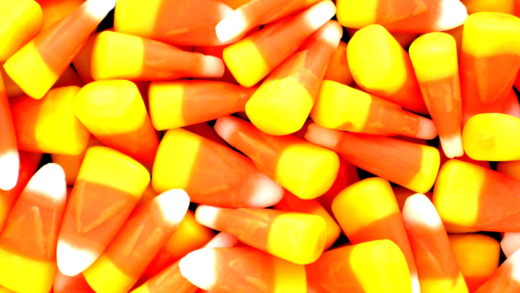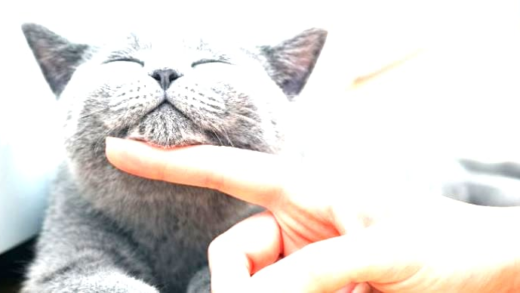The queen conch shell is vital for cultural identity, ecology, and economy. Overharvesting and habitat destruction threaten its population. Legal regulations and sustainable practices are essential for its conservation. Alternatives exist to enjoy conch shells without environmental harm.
What is a Conch Shell?
The queen conch shell is not just a beautiful object; it carries deep significance. Conch shells are the hard, spiral shells of marine mollusks, primarily from the family Strombidae. Found in warm, shallow waters, these shells have been used by various cultures for thousands of years. In many coastal communities, conch shells symbolize life, sustenance, and cultural heritage.
Historically, conch shells have served multiple purposes:
- Musical Instruments: Many cultures use conch shells as trumpets, producing deep, resonant sounds.
- Crafts and Art: Artisans create jewelry and decorative items from conch shells.
- Food Source: The meat of the queen conch is a delicacy in many Caribbean cuisines.
Understanding the importance of the queen conch shell enhances appreciation for marine biodiversity and the need for conservation efforts.
Characteristics of the Queen Conch
The queen conch is remarkable for its size, beauty, and biological features. This mollusk can grow up to 12 inches in length and has a striking, spiraled shell with a glossy, pink interior. Its shell is thick and sturdy, making it a prized collectible.
Key characteristics include:
- Coloration: The exterior features hues of orange, yellow, and brown, which can vary among individuals.
- Shape: The shell has a distinctive spiral shape, with a wide opening that allows the animal to extend its body.
- Habitat: Typically found in seagrass beds, the queen conch prefers warm, shallow waters.
These features make the queen conch not only an ecological asset but also a beautiful symbol of marine life.
Symbolism in the Bahamas
In the Bahamas, the queen conch is more than just a shell; it is a vital part of the culture and identity. The conch symbolizes resilience and abundance, reflecting the rich marine resources that support the local economy and lifestyle.
Its significance includes:
- Cultural Identity: The conch is featured in traditional dishes, celebrations, and local art.
- Tourism: As a symbol of the Bahamas, it attracts tourists eager to experience local cuisine and crafts.
- Heritage: The conch serves as a reminder of the historical connection between the islanders and the sea.
The queen conch is deeply embedded in Bahamian culture, representing both beauty and sustenance.
Value of the Queen Conch Shell
The queen conch shell is highly valued for several reasons. Beyond its aesthetic appeal, it has significant cultural and economic importance. The shell is often collected for decorative purposes and as a symbol of coastal life.
Reasons for its value include:
- Aesthetic Appeal: The beautiful colors and unique shapes make it a favorite among collectors.
- Economic Value: The queen conch supports local fisheries and tourism, contributing to the economy.
- Cultural Significance: It is integral to local traditions and crafts, enhancing its worth beyond mere monetary value.
This combination of factors drives demand and emphasizes the need for sustainable practices.
Population Decline
Despite its value, the population of the queen conch is declining, raising concerns about sustainability. Overharvesting, habitat loss, and environmental changes contribute to this issue. The following factors highlight the decline:
- Overfishing: Unsustainable collection practices have led to a significant reduction in populations.
- Habitat Destruction: Coastal development and pollution damage the seagrass beds essential for their survival.
- Climate Change: Rising ocean temperatures and acidity levels threaten marine ecosystems.
Addressing these challenges is critical for the conservation of queen conch populations and the health of marine environments.
Ecological Impacts of Conch Harvesting
The harvesting of queen conch shells has significant ecological impacts on marine ecosystems. When conch populations are overharvested, it disrupts the balance of the marine environment. The queen conch plays a crucial role in its habitat, particularly in seagrass beds. These beds not only provide shelter for various marine species but also serve as vital feeding grounds for the queen conch itself.
Key ecological impacts include:
- Disruption of Food Chains: Removing too many conchs affects the species that rely on them for food, leading to population imbalances.
- Habitat Degradation: Overharvesting can lead to the decline of seagrass beds, which are essential for many marine organisms.
- Loss of Biodiversity: The decline of queen conch populations can result in decreased biodiversity, affecting overall ecosystem health.
Conservation efforts are essential to mitigate these impacts and ensure the survival of the queen conch and its habitat.
Legal Regulations on Conch Shell Collection
The collection of queen conch shells is subject to various legal regulations designed to protect this valuable species. These laws aim to manage conch populations sustainably and prevent overfishing. Different countries have established rules regarding the collection, trade, and consumption of queen conch to ensure its survival.
Key regulations include:
- Size Limits: Many jurisdictions enforce minimum size limits for harvested conchs to ensure that younger, breeding individuals can reproduce before being collected.
- Seasonal Closures: Some areas implement closed seasons during breeding periods to protect the population during critical times.
- Permits and Licenses: Harvesters may need special permits to collect queen conch, ensuring that collection is monitored and regulated.
Awareness of these regulations is crucial for anyone interested in collecting or using conch shells, as they help protect this important marine species.
Protecting Queen Conch Populations
Protecting queen conch populations requires concerted efforts from individuals, communities, and governments. Sustainable practices are essential to ensure that future generations can enjoy the beauty and cultural significance of conch shells.
Practical steps individuals can take include:
- Support Sustainable Seafood: Choose seafood that is harvested sustainably and certified by recognized organizations.
- Participate in Conservation Programs: Engage in local conservation efforts aimed at protecting marine ecosystems and conch habitats.
- Educate Others: Raise awareness about the importance of queen conch and the impact of overharvesting.
By taking these steps, individuals can contribute to the conservation of queen conch populations and help maintain the ecological balance of marine environments.
Alternatives to Enjoying Conch Shells
There are many creative ways to appreciate conch shells without harming the environment. Embracing alternatives helps preserve the queen conch populations while still enjoying the beauty of these shells.
Some alternatives include:
- Art and Crafts: Create artwork or crafts using recycled materials that mimic the appearance of conch shells.
- Digital Displays: Use photographs or digital art of queen conch shells for home decor instead of collecting real shells.
- Education: Visit aquariums or marine education centers to learn more about queen conch and marine life.
These alternatives not only celebrate the beauty of conch shells but also promote conservation and environmental awareness.
Ecological Impacts of Conch Harvesting
The harvesting of queen conch shells has significant ecological impacts on marine ecosystems. When conch populations are overharvested, it disrupts the balance of the marine environment. The queen conch plays a crucial role in its habitat, particularly in seagrass beds. These beds not only provide shelter for various marine species but also serve as vital feeding grounds for the queen conch itself.
Key ecological impacts include:
- Disruption of Food Chains: Removing too many conchs affects the species that rely on them for food, leading to population imbalances.
- Habitat Degradation: Overharvesting can lead to the decline of seagrass beds, which are essential for many marine organisms.
- Loss of Biodiversity: The decline of queen conch populations can result in decreased biodiversity, affecting overall ecosystem health.
Conservation efforts are essential to mitigate these impacts and ensure the survival of the queen conch and its habitat.
Legal Regulations on Conch Shell Collection
The collection of queen conch shells is subject to various legal regulations designed to protect this valuable species. These laws aim to manage conch populations sustainably and prevent overfishing. Different countries have established rules regarding the collection, trade, and consumption of queen conch to ensure its survival.
Key regulations include:
- Size Limits: Many jurisdictions enforce minimum size limits for harvested conchs to ensure that younger, breeding individuals can reproduce before being collected.
- Seasonal Closures: Some areas implement closed seasons during breeding periods to protect the population during critical times.
- Permits and Licenses: Harvesters may need special permits to collect queen conch, ensuring that collection is monitored and regulated.
Awareness of these regulations is crucial for anyone interested in collecting or using conch shells, as they help protect this important marine species.
Protecting Queen Conch Populations
Protecting queen conch populations requires concerted efforts from individuals, communities, and governments. Sustainable practices are essential to ensure that future generations can enjoy the beauty and cultural significance of conch shells.
Practical steps individuals can take include:
- Support Sustainable Seafood: Choose seafood that is harvested sustainably and certified by recognized organizations.
- Participate in Conservation Programs: Engage in local conservation efforts aimed at protecting marine ecosystems and conch habitats.
- Educate Others: Raise awareness about the importance of queen conch and the impact of overharvesting.
By taking these steps, individuals can contribute to the conservation of queen conch populations and help maintain the ecological balance of marine environments.
Alternatives to Enjoying Conch Shells
There are many creative ways to appreciate conch shells without harming the environment. Embracing alternatives helps preserve the queen conch populations while still enjoying the beauty of these shells.
Some alternatives include:
- Art and Crafts: Create artwork or crafts using recycled materials that mimic the appearance of conch shells.
- Digital Displays: Use photographs or digital art of queen conch shells for home decor instead of collecting real shells.
- Education: Visit aquariums or marine education centers to learn more about queen conch and marine life.
These alternatives not only celebrate the beauty of conch shells but also promote conservation and environmental awareness.





Comments are closed.